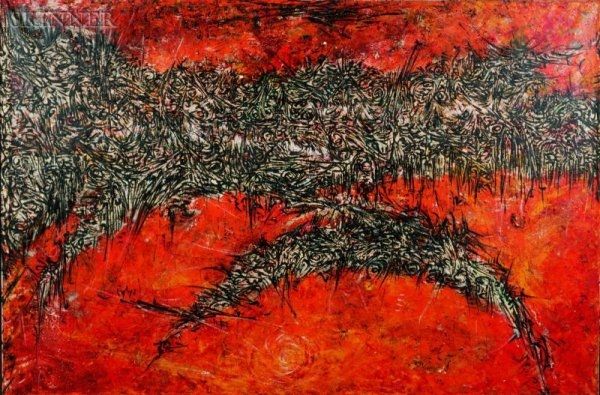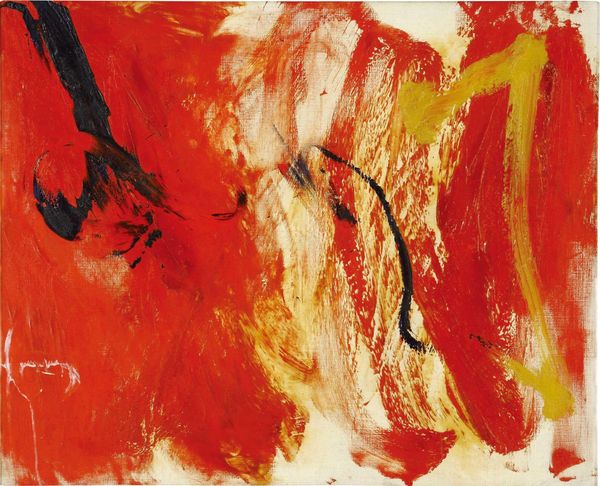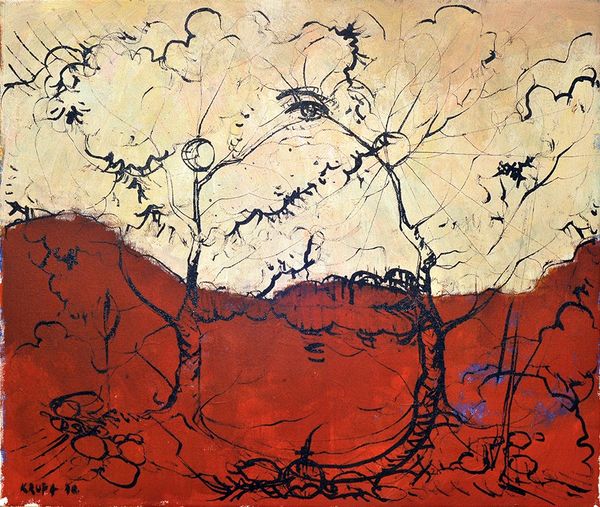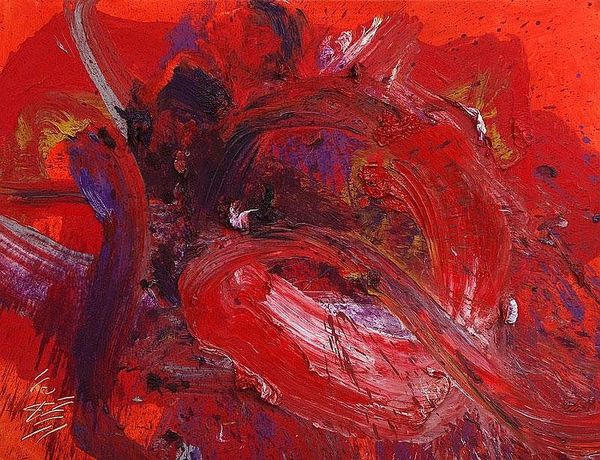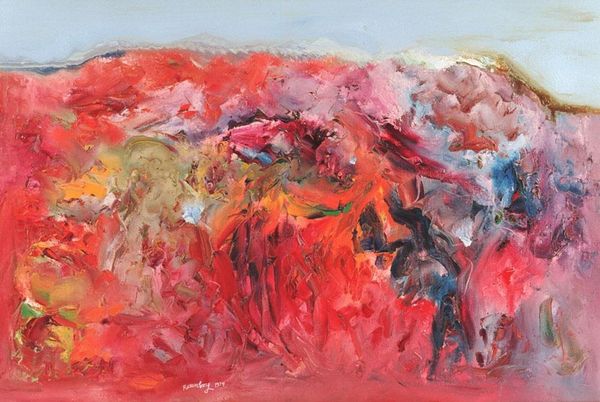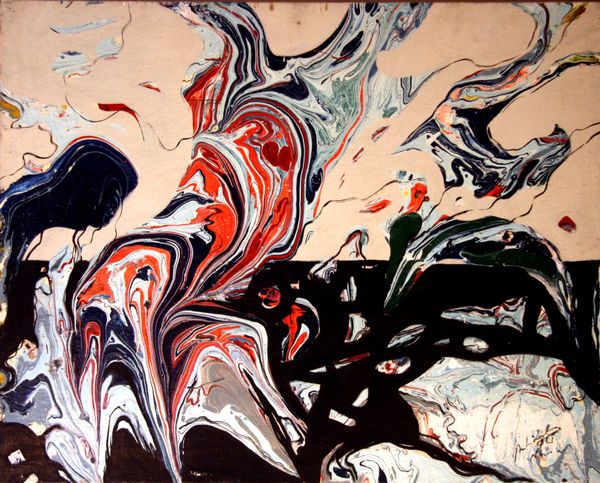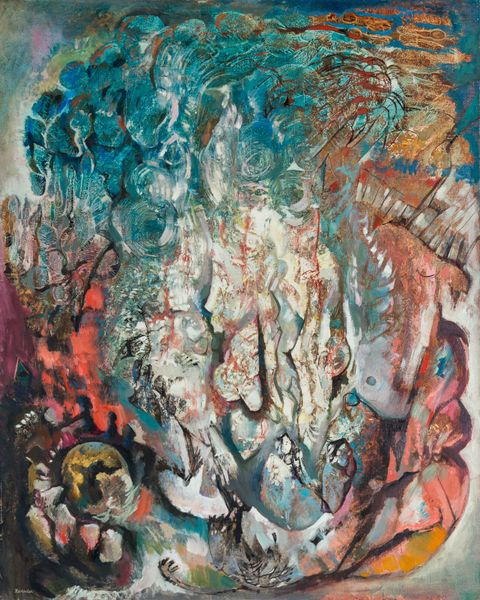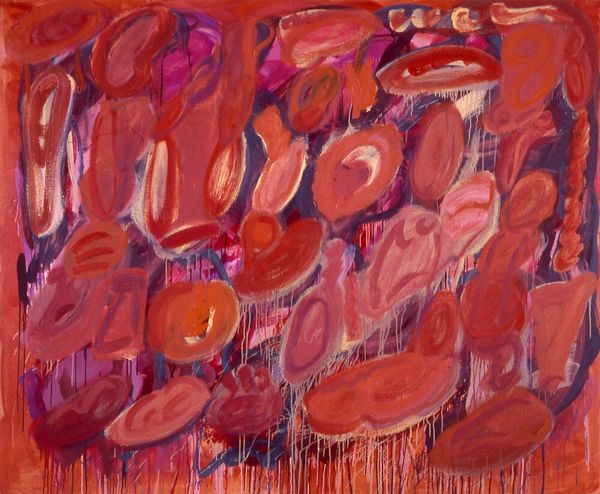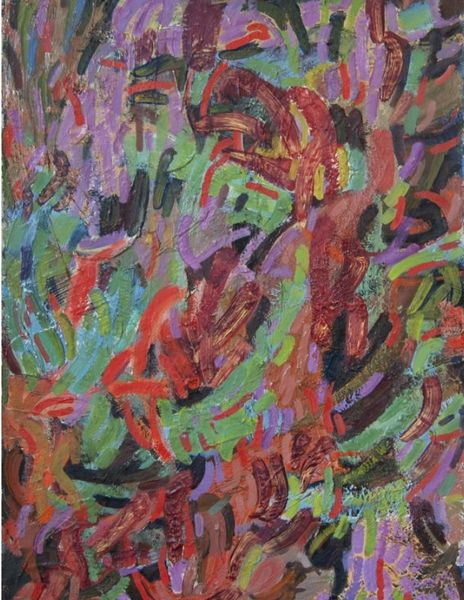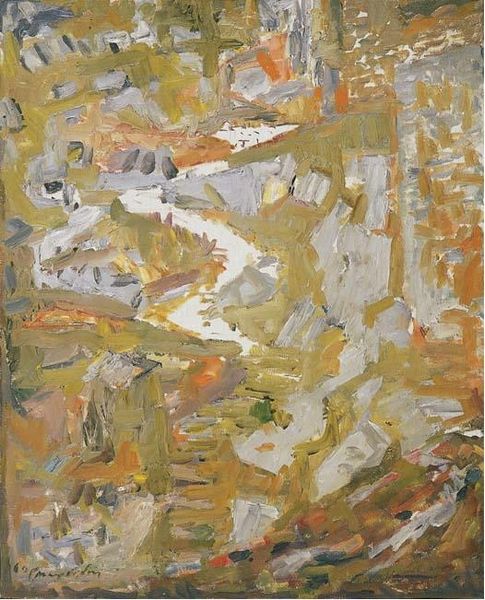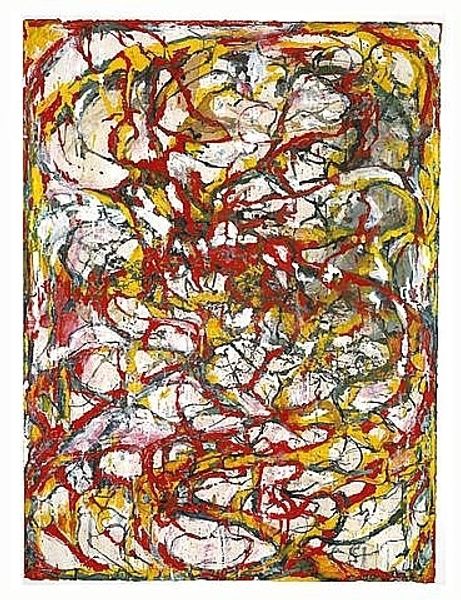
Copyright: Elaine de Kooning,Fair Use
Editor: Here we have Elaine de Kooning’s 1987 piece, “Glass Wall,” done in acrylic. It's… kind of chaotic. It gives me the feeling of looking at prehistoric cave paintings through a very smudged lens. All those horses… What's your read on this, knowing the period it came from? Curator: What interests me here is how de Kooning engages with the visual language of Abstract Expressionism, while overtly referencing Paleolithic cave paintings. We see that push and pull between abstraction and figuration. This tension raises questions about the 'primitive' as a recurring trope in modern art, especially in a post-structuralist era grappling with notions of authenticity and originality. Does it reinforce or critique the idealization of a pre-modern past? Editor: So it’s not *just* about the image of the horses themselves? Curator: Not at all. The horses serve as entry point. How does the artist use the visual rhetoric of "primitivism," popularized by figures like Picasso, to perhaps, ironically comment on the art world’s fascination with origins and raw, unfiltered expression? It feels deliberately staged. Editor: Interesting, almost like she's setting up a dialogue between different eras and styles. But does the title "Glass Wall" play into that, too? I’m struggling to connect that title with all the horse figures we see. Curator: Absolutely. "Glass Wall" could imply a barrier, but one that allows for distorted viewing – perhaps of art history itself? What’s visible through that barrier, and how the viewer perceives it, becomes crucial. This connects with ongoing debates about institutional power and how museums and galleries shape our understanding of the past. Editor: I hadn't considered how much the title complicates the image. I’m definitely seeing layers of social and cultural context I missed initially! Curator: Exactly, and that's where the real depth of the work lies. The apparent simplicity masks a complex conversation about art history, appropriation, and the very nature of representation. Editor: This really opens up the possibilities of reading the painting… now I feel like looking for all these sorts of layers when visiting the galleries!
Comments
No comments
Be the first to comment and join the conversation on the ultimate creative platform.
